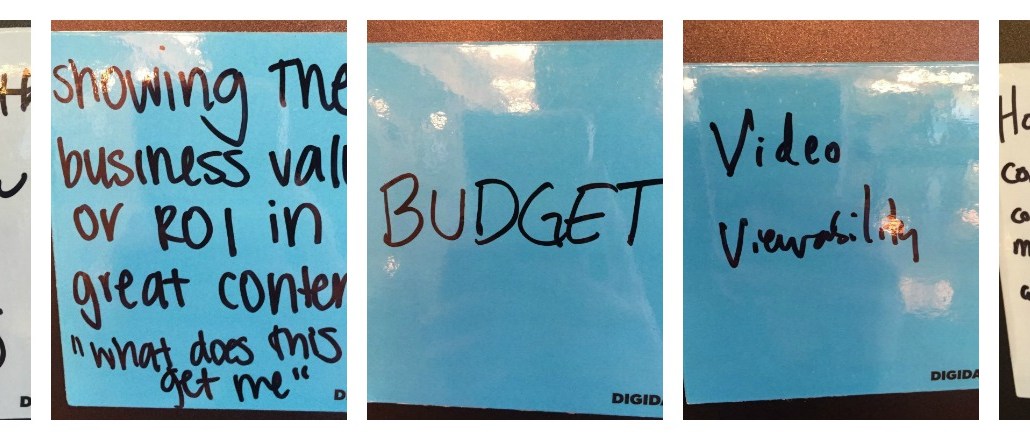
Producing great content takes a lot of work, and patience, for brands and agencies.
At the Digiday Content Marketing Summit this week in Austin, marketing executives came together to discuss what they’re dealing with in the industry. Attendees wrote down the single biggest challenge they’re facing today when it comes to successful content for the Digiday challenge board.
The major themes: the difficulty to tying content to conversions, a lack of resources combined with mounting pressure, and internal tension that prohibits creatives from experimenting and leaves brands stuck in ruts.
We pulled a few of the challenges from the board and asked their marketers behind them to provide some context, anonymously, on what vexes them.
“We can create ‘great’ content, but how do we guarantee it is seen? How do we guarantee that the message/takeaway of the video was viewed? It is our job to put guardrails in place to make sure that our message is seen. The cost of guaranteeing that messages are seen is increasing greatly, and the industry needs to brace themselves for the increased cost. Consider the Media Rating Council guidelines: 50 percent view for two seconds. Ha, is that how the creative team packaged the message?”

“We’ve come a long way on this one over the past six months or so, but we still have clients who want to know how many conversions can be attributed to specific platforms or even pieces of content — and often the brands who want to know this are the ones without digital conversion paths that can be tracked and analyzed. We’re combating this by fine-tuning a purchase intent model that assigns weights to different interactions a user may have with the content, and using this to back into a minimum dollar amount that we feel confident taking credit for — but it’s obviously not a perfect science.”

“The challenge I face is how to educate my company-wide content writers to produce engaging, effective content for our target audience. We have many different teams producing content for several mediums and platforms and who feel very connected to their area — meaning they don’t like outside perspective. I want to make sure we all seamlessly collaborate on content creation.”
“My challenge is finding an authoritative voice for your brand in a cluttered and competitive category where there are many experts (brands and publishers) all vying for the attention of consumers. Specifically, the financial category is littered with “experts” all offering advice to consumers, which makes the waters difficult to navigate. Some of the experts offer sound advice; some do not. How does a brand build out a content strategy in the financial space that can feel trustworthy and reputable, while still maintaining the brand’s identity and helping to improve ROI?”

“How do we compete for marketing funding to support content marketing programs when senior leaders compare it to mature marketing vehicles that have a more linear, positive ROI?”
To see the full challenge board, check out the photo below. (Click to zoom.)
More in Marketing

New partnerships, marketing fuel BNPL’s holiday surge
This holiday season, more brands deployed BNPL services with different payment options beyond the more familiar “pay-in-four” structure.

Pitch deck: How Amazon is recasting Twitch as a core part of its CTV pitch
Amazon is positioning Twitch as a defining asset in its CTV ambitions.

Netflix transforms former mall department stores into experiential venues
The location in Dallas opens this week, and one at the King of Prussia mall near Philadelphia opened last month.








